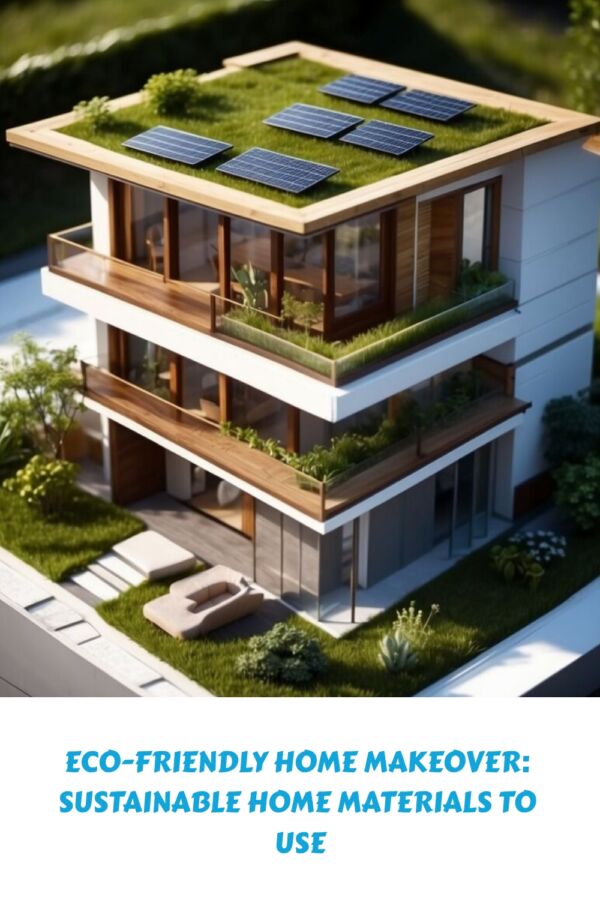Sustainable building materials have emerged as a cornerstone in constructing environmentally friendly homes. These materials, derived from natural and readily replenishable resources, ensure minimal environmental impact throughout their lifecycle.
They reduce the ecological footprint of buildings by conserving non-renewable resources and optimizing energy efficiency during and after construction.

Green building materials such as straw bales, reclaimed wood, and bamboo contribute significantly to sustainability. These materials are lauded for their energy-efficient properties, reducing heating and cooling costs.
Using sustainable materials is not just a nod to environmental responsibility but also a smart economic choice, often resulting in lower long-term expenses due to enhanced durability and reduced energy consumption.
The movement towards sustainable buildings also reflects a growing consciousness about the importance of healthy living spaces. Materials like hempcrete and mycelium are gaining popularity for their non-toxic and biodegradable qualities, ensuring safer indoor environments.
By choosing such materials, homeowners lay the foundation for a greener future, leading the charge in transitioning to more sustainable practices in the construction industry.
Mass Timber
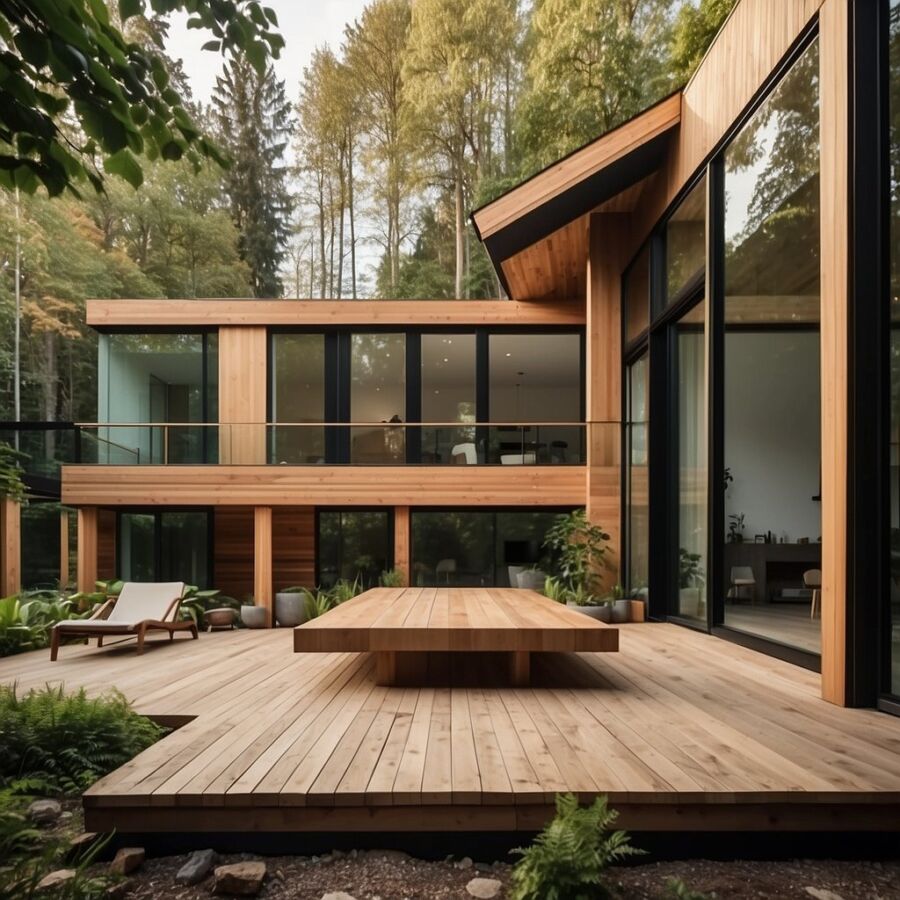
Mass timber is a pivotal material for sustainable home building due to its low carbon footprint and eco-friendly attributes.
Revolutionizing Construction with Reduced Carbon Emissions
Mass timber, an engineered wood product, is making strides in the construction industry. It’s a green alternative to traditional building materials, drastically reducing carbon emissions. Construction with mass timber yields benefits like:
- Carbon Sequestration: Trees absorb CO2, and using wood for building effectively traps this greenhouse gas.
- Renewability: Wood is a renewable resource, aligning with sustainable living ideals.
- Energy Efficiency in Production: Less energy is used to manufacture mass timber than steel or concrete.
Its adaptability in design and robustness parallels conventional materials, highlighting mass timber as an environment-conscious choice for modern builders and homeowners seeking to contribute to a healthier planet.
Solar Shingles

Solar shingles present an innovative integration of renewable energy technology with traditional homebuilding materials, offering homeowners an eco-friendly option that preserves aesthetics.
Merging Solar Technology with Traditional Aesthetics
Solar shingles are unique solar panels designed to look like conventional roofing materials. These shingles lay flush with the roofing surface, creating a seamless appearance that enhances a home’s curb appeal while providing the ecological benefits of solar energy.
By replacing standard building materials, solar shingles contribute to a sustainable home by reducing the reliance on fossil fuels and lowering energy bills. The dual functionality as both a building material and a renewable energy source marks solar shingles as a cost-effective, sustainable material choice for eco-conscious homeowners.
See Related: Best Eco-Friendly Fireplaces
Bamboo
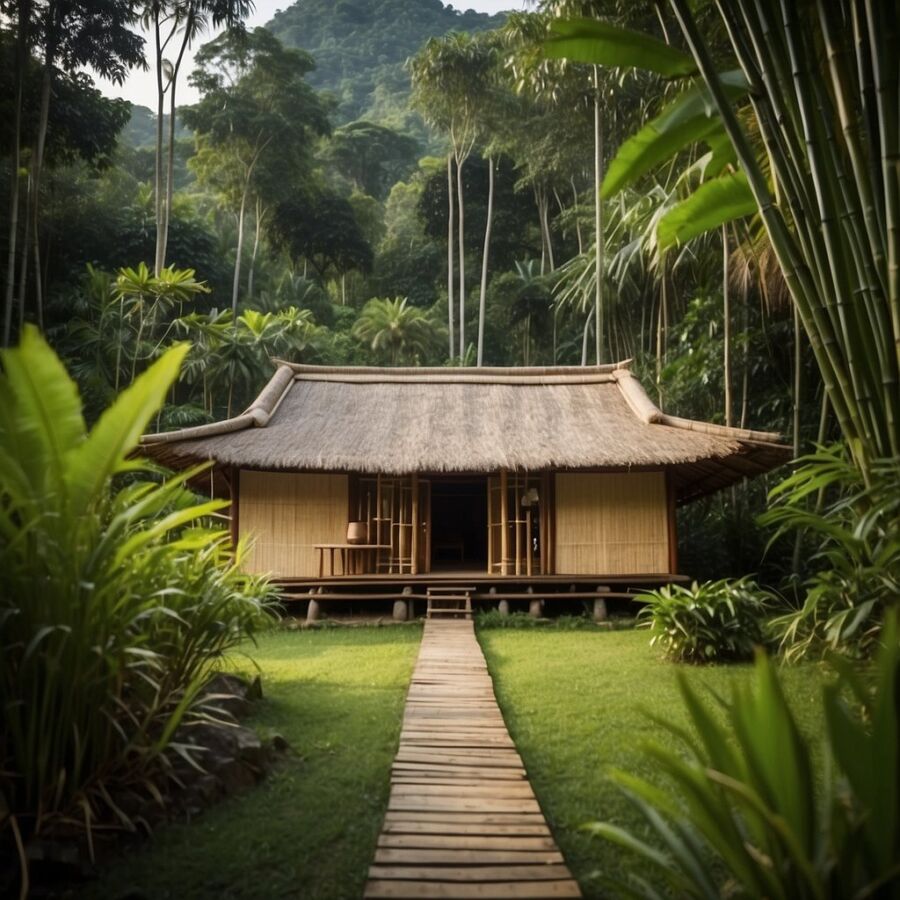
Bamboo has emerged as a strong contender in the realm of sustainable home materials due to its rapid growth rate and durability.
The Versatile and Fast-Growing Choice for Eco-Friendly Homes
Bamboo is recognized for its exceptional growth speed, making it a highly renewable resource.
Compared to hardwood trees, which can take decades to mature, bamboo reaches harvesting readiness faster, ensuring a steadier supply for construction and home products. For eco-conscious homeowners, this rapid renewal rate underscores bamboo’s sustainability.
Durability:
Bamboo’s robust nature means products crafted from it offer impressive longevity. Its natural resistance to pests and decay contributes to this durability, often without the need for chemical treatments.
Sustainable Material:
As a natural material, bamboo’s utilization supports a lower environmental impact. Not only does it require minimal water to thrive, but it also absorbs carbon dioxide, contributing to air quality improvements.
Cost-Effectiveness:
Besides being eco-friendly, bamboo is cost-efficient, providing an accessible option for individuals aiming to incorporate sustainable materials into their homes. Its ready availability and minimal maintenance needs make it a practical, sustainable choice.
Ashcrete
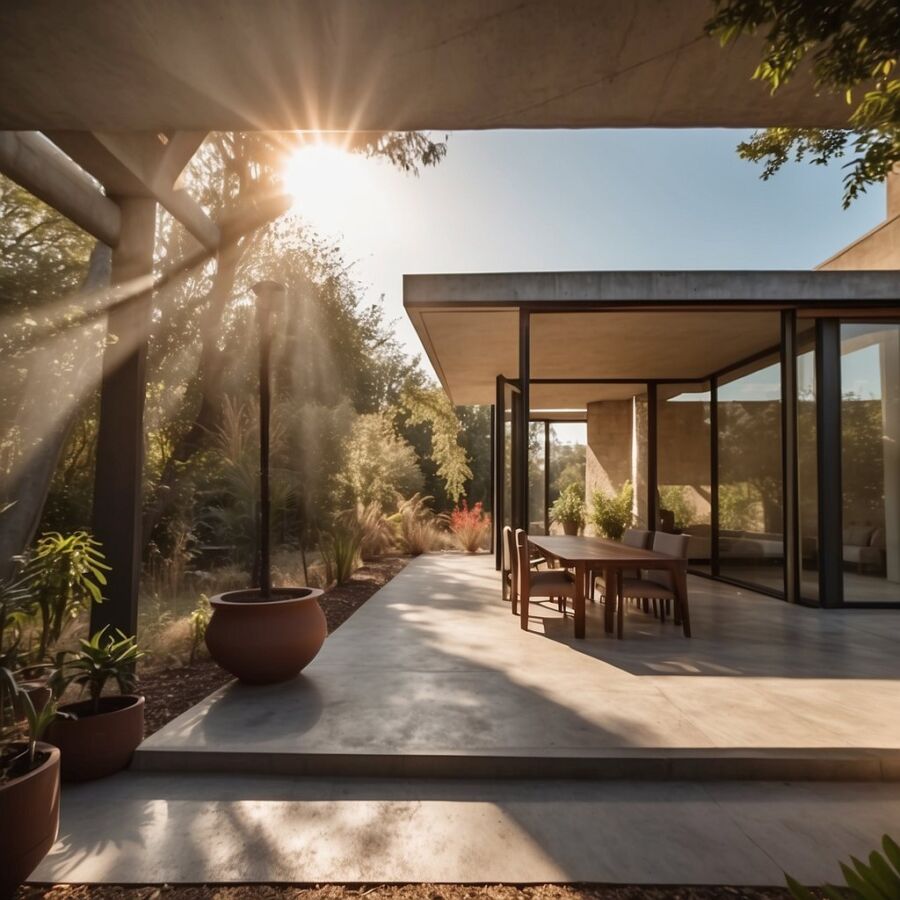
Ashcrete is revolutionizing sustainable architecture by offering an eco-friendly and cost-effective alternative to traditional concrete blocks.
The Eco-Friendly Concrete Alternative
Ashcrete, primarily composed of Class C fly ash, presents a sustainable solution for building materials. Nearly 93% of its content is sourced from recycled material, showcasing its commitment to an eco-friendly approach.
Class C fly ash, abundant due to its origin from power plant byproducts, reduces reliance on virgin resources and diminishes landfill waste. Its production processes also emit lower levels of CO2 compared to the manufacture of conventional concrete, thus lessening its environmental footprint.
Affordable and durable, Ashcrete supports sustainable building efforts without compromising quality or cost-efficiency.
See Related: Essential Environmentally Friendly Tech Products
Smart Glass Windows
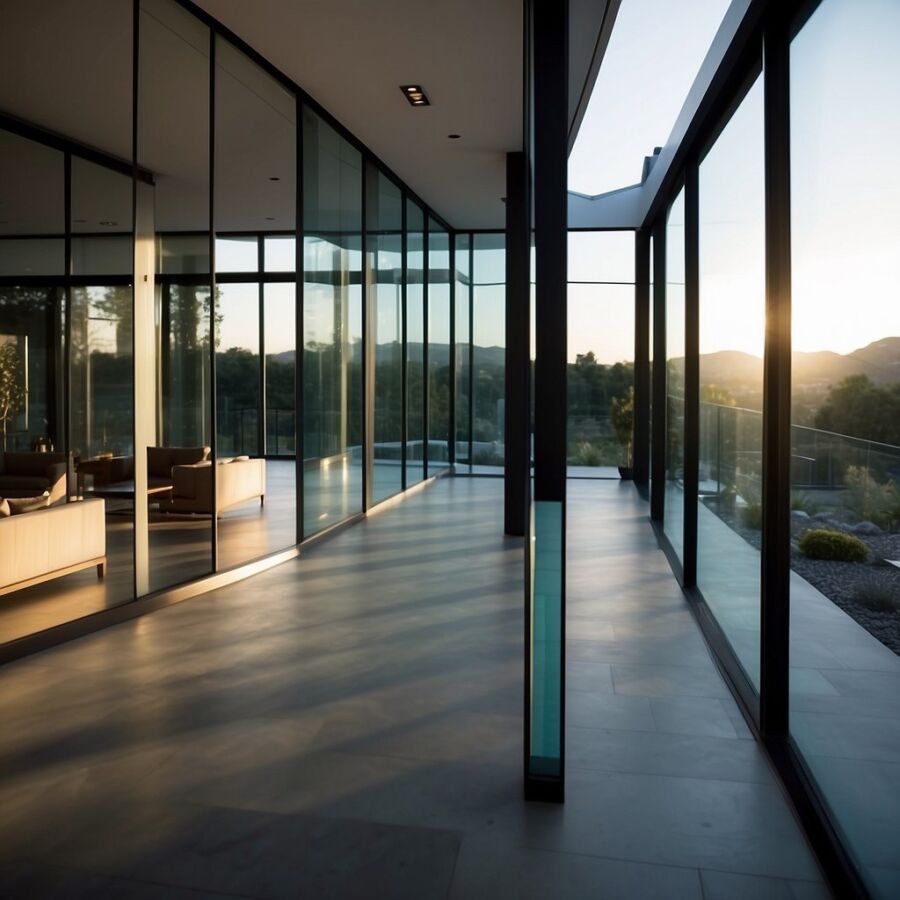
Smart glass windows represent a significant advancement in home sustainability, blending innovative design with energy-saving capabilities.
Enhancing Energy Efficiency
Smart glass windows, utilizing electrochromic technology, dynamically adjust to external light conditions, significantly reducing reliance on HVAC systems. This adaptable feature enhances indoor comfort and leads to lower energy bills.
As for design, these windows merge seamlessly with modern aesthetics, ensuring that environmental sustainability does not compromise the visual appeal of a home. They are instrumental in creating living spaces that are both energy-efficient and comfortable, achieving these standards without the need for traditional window treatments.
Cork
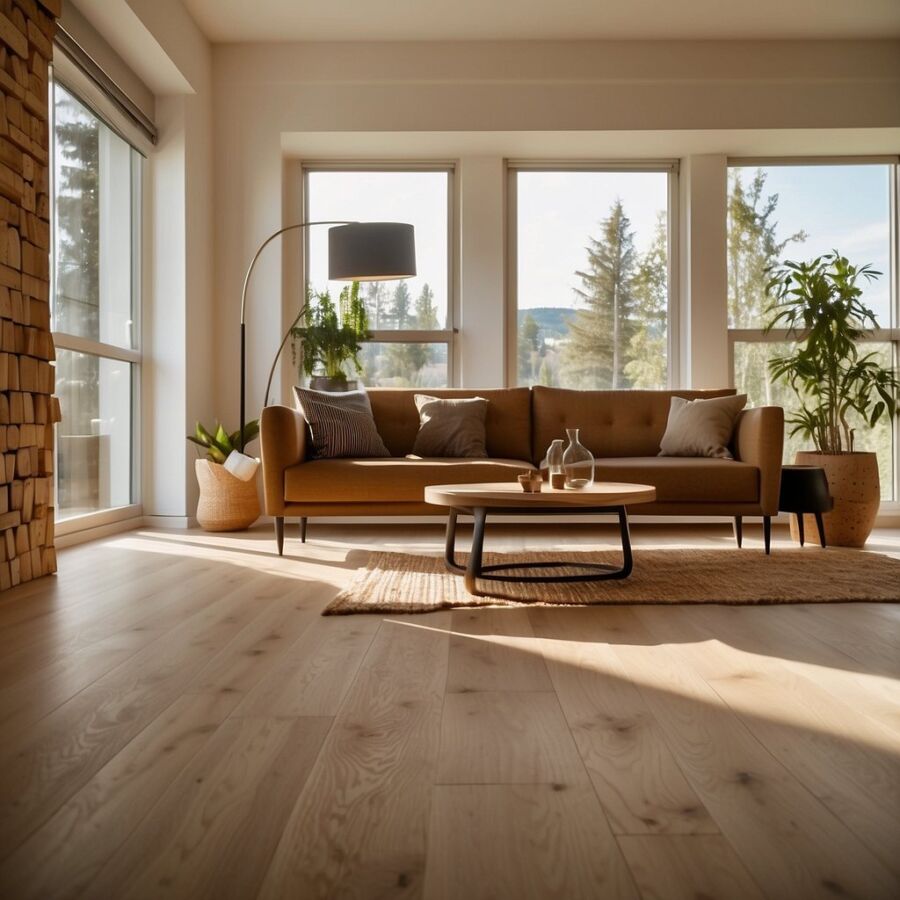
Cork emerges as an outstanding option in the realm of sustainable materials, offering eco-friendliness and versatility for various home applications, notably in flooring.
The Renewable Choice for Flooring and More
Cork is harvested from the bark of cork oak trees, unique in their ability to regenerate bark. This makes cork eco-friendly, as it doesn’t harm the tree or lead to deforestation. Natural fibers within cork contribute to a comfortable walking surface, revered in flooring for its softness and insulation properties.
Cork’s durability and natural resistance to mold, mildew, and water make it an excellent material for floors. The material is also known for its thermal and acoustic insulating qualities, enhancing home comfort.
NewspaperWood

NewspaperWood emerges as a sustainable frontier, transforming discarded paper into durable materials for various applications.
Turning Waste Back into a Usable Material
They recycle newspapers into a new material, NewspaperWood, which reverses the traditional wood-to-paper cycle. This innovative material is eco-friendly and contributes to the circular economy through its capacity to be recycled again.
Developed initially by Mieke Meijer and subsequently with the Dutch design brand Vij5, NewspaperWood challenges the norms of material usage by offering an alternative that stands out for its sustainability and distinctiveness in design.
See Related: Best Home Energy Saving Products to Buy Today
Additional Sustainable Materials

Exploring sustainable materials for home construction goes beyond common eco-friendly choices. Newly emerging options offer both environmental benefits and cost-effectiveness, enhancing the efficiency of building projects.
From Wool Insulation to Recycled Glass Tiles
Wool Insulation: Sheared from sheep, wool is a natural and renewable source of insulation. It efficiently regulates temperature and moisture, contributing to an energy-efficient home.
Recycled Glass Tiles: Glass waste transformed into flooring and backsplash tiles exemplifies a sustainable reincarnation. These tiles add distinctive aesthetics to homes while reducing landfill waste.
Materials like wool and recycled glass marry functionality with sustainability, providing tangible benefits for a greener future.

